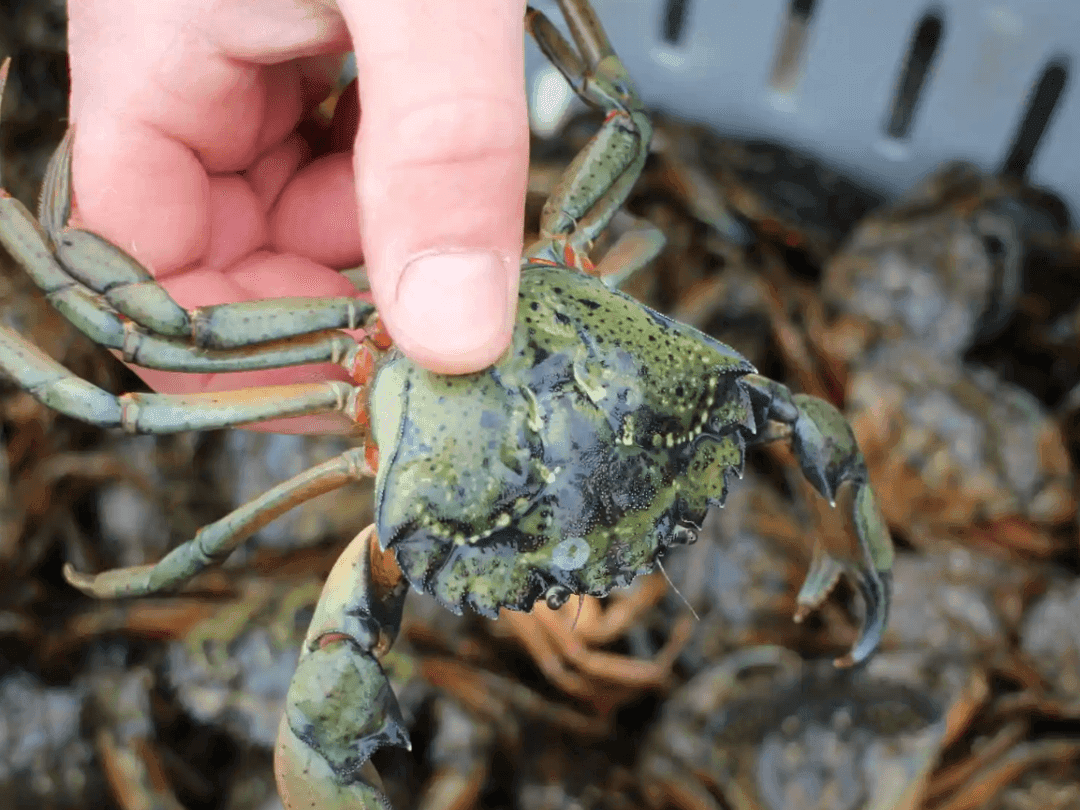Green Crabs: An Invasive Marine Species Impacting Gloucester and the North Atlantic
What is the Green Crab?
The green crab is currently considered to be one of the most invasive species in our marine environment along the Northeastern Atlantic shoreline as well as in European waters and in the waters surrounding Alaska.

This mottled green and dark brown crab is not new to our region but is growing in number and, if left unchecked by predators has the ability to outcompete local species for food and habitats ultimately causing the demise of clams, salt marshes, wildlife, and foliage in some areas.
Where Did Green Crabs Come From?
While the origin of the green crab is not definitively known, experts at the NOAA Fisheries believe that there are two possible ways that green crabs were first introduced to the Americas.
One option is that they very likely hitched a ride on the ballasts of merchant ships coming across the ocean in the 1800s, or were inadvertently transported in packing materials headed to the Americas during the same timeframe.
The Problem With Green Crabs
Unlike their blue crab counterparts, the green variety is harming the marine environments and ecosystems where they invade.
Green crabs eat soft shell clams, destroy oyster beds, bore into salt marshes, and create harmful holes. Additionally, since they are able to survive in a wide variety of temperatures and salinities, the green crab is able to live in many environments where they can avoid predators such as octopi.

Green crabs also have two other scenarios that are helping them thrive in the waters off the coast of Gloucester and Cape Ann. Without natural predators reducing the population, the crabs are able to live unimpeded. Additionally, the crabs are able to produce more than 200,000 eggs in one reproductive cycle and this species may seem unstoppable.
What We Can Do?
The National Oceanic and Atmospheric Administration has put forth a program to eradicate the species including increased trapping, data collection, educating boaters, and closer inspection of boats potentially bringing crabs along as hitchhikers.
As seafood lovers, we can do something too! Eat green crabs as a part of our seafood diet. Just because a species is considered invasive does not make it inedible. In fact, they can be rather delicious!

What 1606 Is Doing To Help

The American cuisine restaurant, 1606, located in the lobby of the Beauport hotel is also doing its part to eradicate the green crab problem. Our oceanfront deck not only showcases the beautiful water and offers our fresh local ingredients, but is also working toward helping our local marine environment by offering green crabs on the menu.
The 1606 sources the invasive green crabs from Castle Hill Lobster Company and uses them in special dinner features such as Crab Bisque. In doing so, we are hoping to raise awareness of this invasive species, which is harming the saltwater marshes in and around Cape Ann. Along with a few restaurants in the area also featuring green crab on their menus we hope to make strides against this invasive species.
